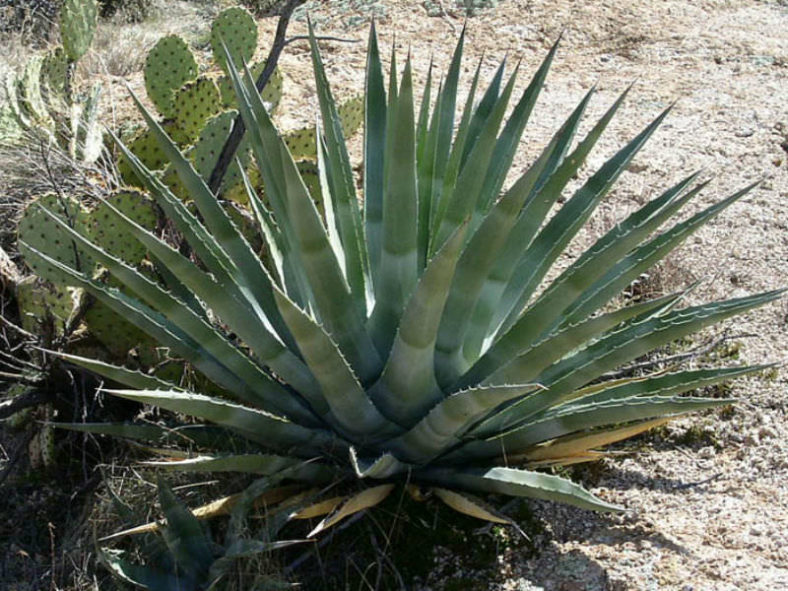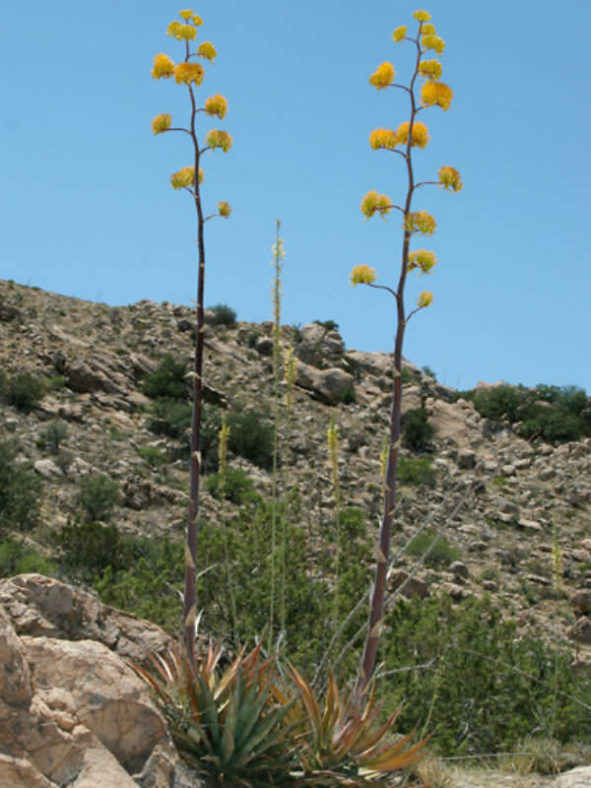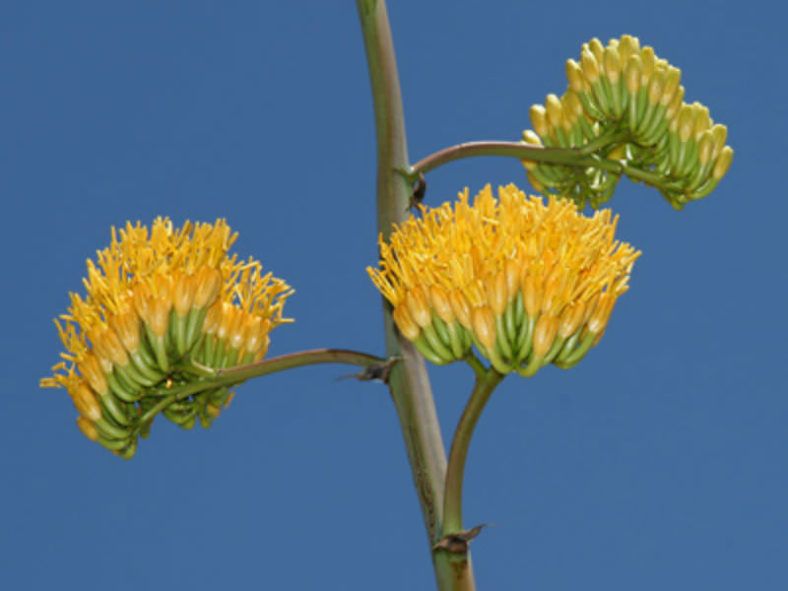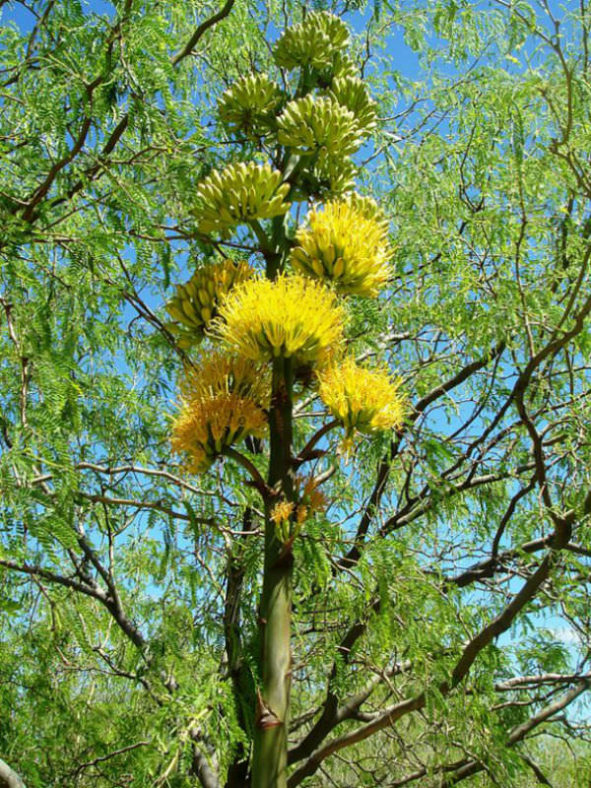Scientific Name
Agave chrysantha Peebles
Common Name(s)
Golden Flowered Century Plant, Golden Flowered Agave
Synonym(s)
Agave palmeri subsp. chrysantha, Agave palmeri var. chrysantha
Scientific Classification
Family: Asparagaceae
Subfamily: Agavoideae
Genus: Agave
Etymology
The specific epithet "chrysantha" (pronounced "kris-ANTH-uh") means "having golden flowers" and refers to the attractive golden yellow flowers of this species.
Origin
Agave chrysantha is endemic to Arizona.
Description
Agave chrysantha is a succulent plant that forms a rosette of stiff, green, lance-shaped leaves with sharp spines along the margins and a stout terminal spine.
The flowers are brilliant golden yellow with no purplish or reddish tinge and appear atop a stalk that can grow up to 21 feet (7 m) tall. Agave chrysantha is a monocarpic plant, which means the rosette dies after flowering.

Hardiness
USDA hardiness zones 7a to 10b: from 0°F (-17.8°C) to 40°F (4.4°C).
How to Grow and Care
Agave is not a difficult plant to grow. They're slow-growing and dramatic and will even thrive on a bit of neglect. If you're the type of person who likes to fuss with houseplants and water a lot, Agave is probably not the plant for you. If you're the type of person who likes to set it and forget it, and you have a sunny window, Agave might be the ideal choice. Be aware that some large varieties will eventually outgrow your room (unless you have a large greenhouse), and Agave can be aggressive. They have irritating sap and sometimes very sharp thorns that can injure small children and even pets. Generally, Agaves do not require repotting every year. Most species commonly found in cultivation grow very slowly and take a long time to outgrow their pot. It's also best to handle your Agave as little as possible since they do not like to be disturbed.
See more at How to Grow and Care for Agave.
Uses
Man has been harvesting and utilizing Agaves for approximately 9,000 years. The huge plant comprised a huge part of primitive man's diet. Closely related to lilies, three major parts are edible: flowers, stalks or basal rosettes, and sap. Leaves are a lesser edible part of the plant.
See more at Agave: Edible Plant.
Links
- Back to genus Agave
- Succupedia: Browse succulents by Scientific Name, Common Name, Genus, Family, USDA Hardiness Zone, Origin, or cacti by Genus
Photo Gallery
Click on a photo to see a larger version.


